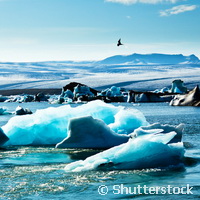Climate change in the Arctic affecting health in parts of Europe
Climate change in the Arctic is more evident than in most parts of the world, with global warming moving at a rate of almost twice the global average. But this also has an effect on some parts of Europe, which is being investigated by the project ARCRISK ('Arctic Health Risks and Impacts on Health in the Arctic and Europe Owing to Climate-Induced Changes in Contaminant Cycling'). This project is being highlighted to mark World Environment Day. With funding of EUR 4.75 million (of which the EU has contributed EUR 3.5 million), the project has brought together an international research team from 12 countries to assess the health of different populations in the Arctic and in selected 'exposed' populations in Europe. Leading this study is the Arctic Monitoring and Assessment Programme (AMAP) in Norway. Scientists are analysing the links between environmental contaminants, climate change and human health. In particular how climate change can potentially alter the pathways by which harmful chemicals cycle through the environment and enter food chains. The objective is to compare information from Arctic health studies with results of contaminant effects on populations in other selected areas of Europe. Previous studies have shown that populations living in the Arctic provide a rich source of information that can be used to make comparisons with situations in other parts of Europe, now and under future scenarios of climate change. Professor Arja Rautio, an ARCRISK researcher from the Centre for Arctic Medicine in the University of Oulu, Finland says, 'People living in Arctic areas can be more sensitive to pollutants due to their genetics. This is unfortunate since the northernmost areas of Europe are exposed to more harmful chemicals.' These include new contaminants such as fluorinated and brominated compounds and bisphenol A, which can act on hormones and thus have an impact on human health. 'But seeing the effect on humans, at the population level, could take ten or even 20 years,' the professor adds. This is why ARCRISK has established a database containing data on concentration levels and trends of contaminants in humans. The project, which will end later this year, hopes to establish geographical and past temporal trends in the distribution of pollutants in the Arctic. Various models have been used to analyse the Arctic transport of contaminants and their fate in the environment under various scenarios of chemical emissions and climate change. The outcome will be incorporated in a legacy project database, which will be used to project future geographical and temporal trends in the distribution of pollutants in the Arctic. Other models will determine the contribution of various food webs to human exposure levels through consumption of reindeer, seals, and marine fish, and future changes in human exposure under climate change. The overall results and legacy database will provide scientific support to relevant EU policies on contaminants and health impacts of global change. The ARCRISK team hope their findings will help the development of polices to reduce levels of environmental contaminations on a European, pan-Arctic and also global scale. The results of the project will be presented at a conference of Arctic Frontiers in Tromsø, Norway, in January 2014.For more information, please visit: ARCRISK http://www.arcrisk.eu/ Arctic Monitoring and Assessment Programme (AMAP) http://www.amap.no/
Countries
Norway



